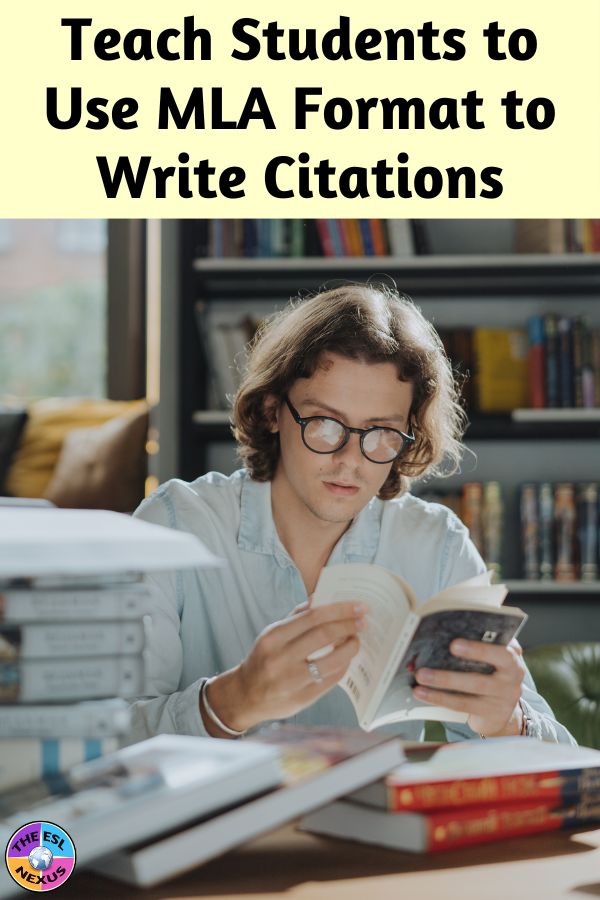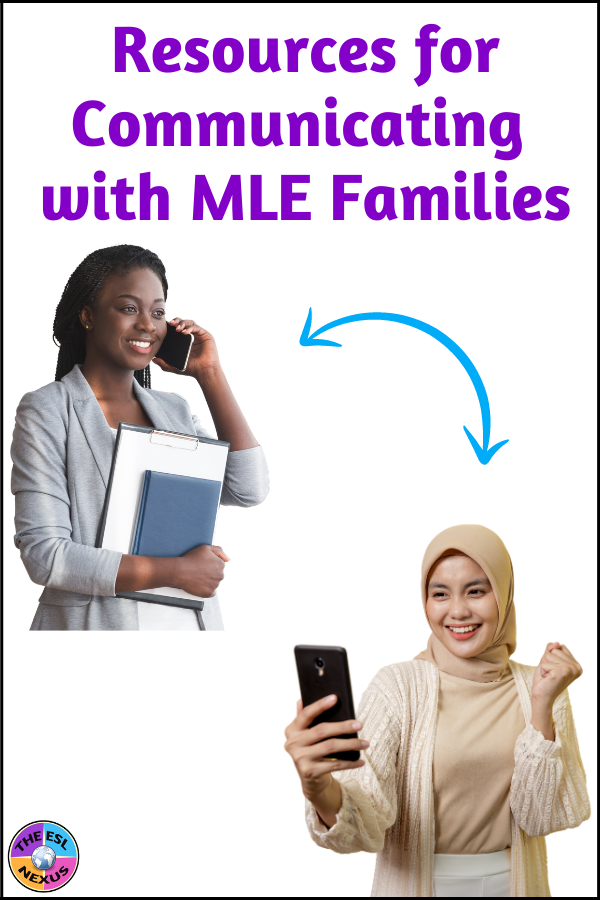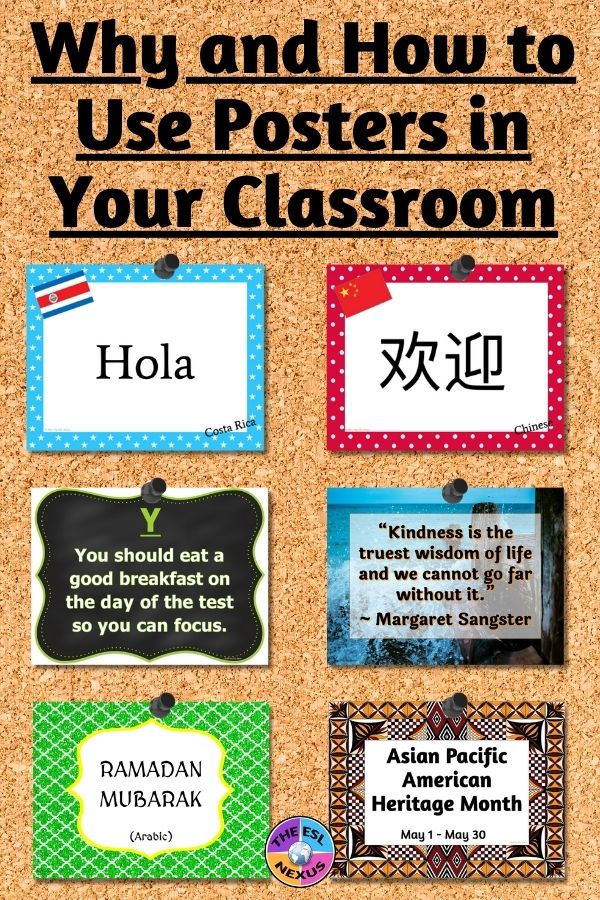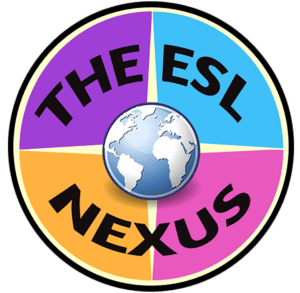Students have to comprehend what they are reading in order to understand the new ideas and concepts presented in their texts. When they don’t understand the material, it’s easy for them to lose interest in the subject and that has a negative impact on their learning. Keep reading to learn how you can develop your ELLs’ reading comprehension skills.
Ideally, you are using texts that are written with ELLs in mind and address their particular learning needs. However, that is not always possible, especially when you are a mainstream teacher teaching a core content subject to a class full of native English speakers, ELLs, and special education students. And even if you are an ESL teacher, it isn’t always possible because you likely have a class of students with a range of reading levels.
If you find yourself in one of these situations, there are several things you can do to make it easier for your ELLs to comprehend the material in the textbooks (and even websites) that you use.
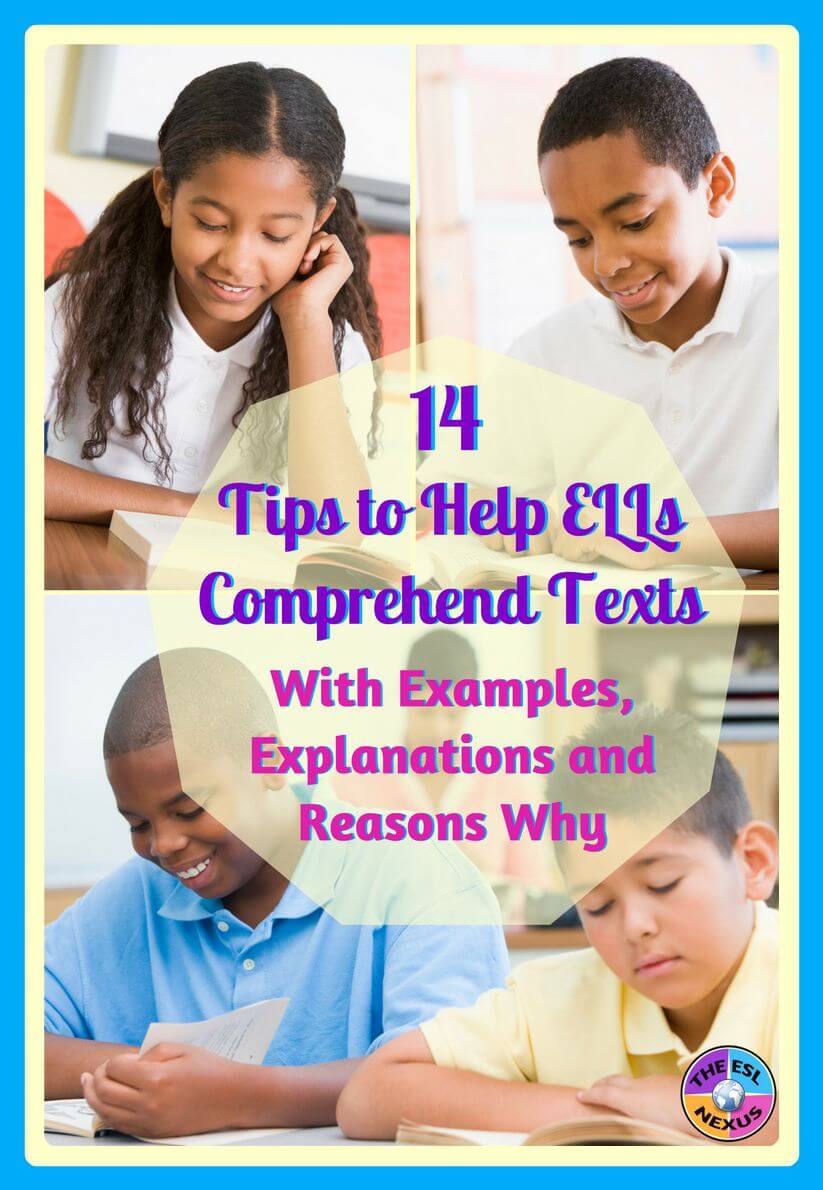 |
| These tips will also help students who are native speakers of English; source: The ESL Nexus |
1) Build background knowledge
How: Use activators, videos, and other activities to provide ELLs basic information that is essential to understanding the text.
Why: When ELLs have a foundation for learning new concepts, which is especially important in social studies, science and math, they will be better able to understand the new information given in those texts.
2) Do a mini-lesson or pre-teach grammar structures found in the text
Such as: The passive voice or the present progressive.
Why: These verb tenses are often used in social studies and science texts.
3) Do a mini-lesson or pre-teach academic vocabulary found in the text
Such as: Transition words like although, however, meanwhile.
Why: Understanding how phrases connect to each other is crucial for understanding the main points of texts; understanding the meaning of common transitions will help ELLs comprehend texts in all their subjects, not just one particular subjec
4) Point out ways new words can be defined
Such as: In parentheses, using a comma and then or, using dashes to offset the definition, glossed in the margin, in a glossary at the end of the textbook, as a footnote at the bottom of a page.
Why: When ELLs understand how these structures work and where to find them, they’ll be able to identify the definitions of new words presented in texts.
5) Point out text structures and what they mean
Such as: How a timeline shows when things happened or an image with a caption supports ideas explained in the text or gives additional information about an idea in the text.
Why: Text structures support the ideas and concepts presented by words and using images to explain things is another way ELLs can access information.
6) Teach reading strategies and have ELLs use them when reading on their own
How: Before students read a text, briefly explain a particular reading strategy and how to use it, then after students have finished reading, discuss how things went when they used that reading strategy; see this resource about using reading strategies in content classes.
Why: Telling students which reading strategy to use gives ELLs practice with strategies they may otherwise not use or know about; using reading strategies gives students ways to read the text that help them better comprehend it; hearing how classmates used the same reading strategy they did can offer different ideas on how and why that strategy is helpful.
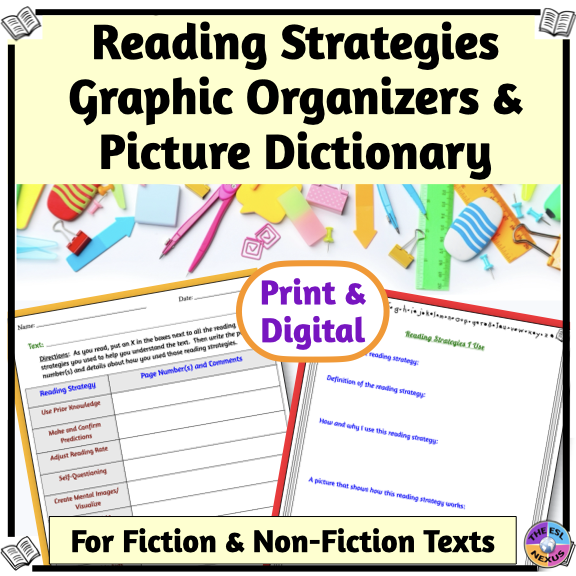 |
| Click HERE for more info about this resource; source: The ESL Nexus |
7) Have students read and discuss the text in heterogeneous small groups
How: Students take turns reading sections of the text and ELLs read short parts.
Why: Reading aloud in a small group of peers is much less nerve-wracking than reading aloud in front of the whole class and teacher; it’s easier to hear and follow along with a text that is read in a small group.
8) Use the reciprocal teaching method or a literature circle approach
How: Every student has a specific role and they work cooperatively to help each understand the text
Why: Sharing responsibility for comprehending the text makes it easier for ELLs; they can be given the easier tasks and then rely on the other group members to explain what the text means; discussing the text in multiple ways with a small group of peers enhances comprehension.
9) Provide an outline of the most important or main ideas before reading the text
How: For each section of the text, write the main idea or an important point but leave out the details
Why: This will help ELLs focus on what is important for them to know in the text; if you wish, you can leave space for students to fill in details about each section on the outline.
10) Give a summary of the text, either written or oral, prior to reading the text
How: Explain in general terms what the text is about.
Why: Giving students an idea of what to expect helps them focus on what they will be reading.
11) Rewrite the text in simpler language
How: Take a long sentence with several clauses and turn it into several sentences; take a sentence or section that jumps around in time and put it in chronological order; take a sentence with lots of pronouns and reword it so it’s more clear who is doing what.
Why: Convoluted sentences are hard for ELLs to understand because by the time they reach the end, they’ve forgotten what the beginning of the sentence was about; if an ELL misses a time marker, they can get confused about what is happening when.
12) Record the text
How: There are lots of apps and websites (such as VoiceThread) that let you do this.
Why: It’s often easier for ELLs to comprehend something orally than to read it because, while they may not recognize words in print, they understand them when they hear them; students can go at their own pace and pause the recording to process what they hear; students can access the material outside the class period, if they are unable to take the text home.
13) Create word walls of both general academic and content specific words
How: Choose words that are essential for understanding the text and are used in more than one content subject (Tier 2) as well as words that are specific to understanding the ideas or concepts in the text (Tier 3); see this resource for essential core academic subject words for Grades 5 – 8.
Why: Using word walls gives students multiple exposures to words they need to know to be successful in school.
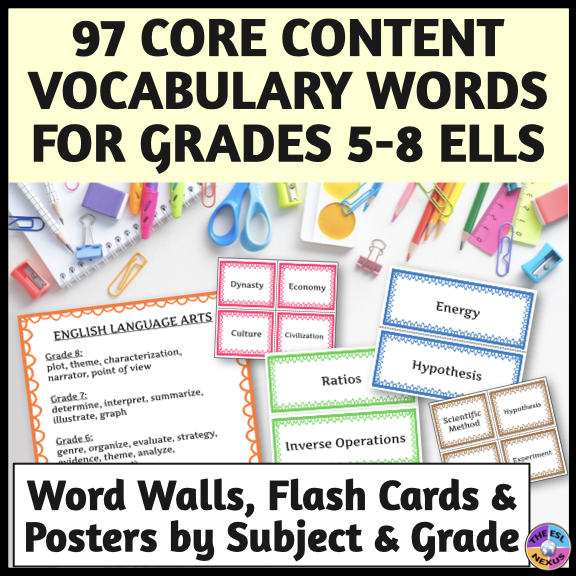 |
| Click HERE for more info about this resource; source: The ESL Nexus |
14) Frequently check if ELLs are understanding the text they are reading
How: Have them do some sort of summary activity for each section or chapter — lower proficiency ELLs can draw and higher proficiency level ELLs can write.
Why: Frequent check-ins will spot students who don’t understand the material or are confused about it and will prevent them from getting completely lost with the text; by checking often, misunderstandings can be addressed sooner and more easily than by waiting until the end of a chapter or unit, at which point much more time might be needed to unravel the lack of understanding or confusion.
Hopefully, now you have lots of ideas to help your students more easily comprehend their textbooks.
December 4, 2017

